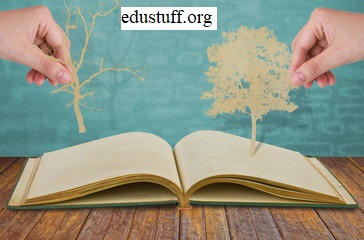
Fiction Branches: Unleash Your Imagination
Fiction Branches
Fiction branches are the different categories of fiction that are based on their content, style, or genre. Fiction branches offer a vast and diverse landscape of storytelling that captivates readers across the globe. From literary masterpieces to fantastical realms, each branch represents a unique avenue for exploration, imagination, and connection. In this article, we delve into the intricacies of fiction branches, celebrating their importance and examining their enduring appeal to readers of all ages and backgrounds.
Fiction is a broad term that encompasses a wide variety of stories. These stories can be set at any time, in any location, and can feature any type of character. However, certain characteristics tend to define different branches of fiction.
Fiction branches are the different categories of fiction that are based on their content, style, or genre. Some of the most common fiction branches include:
Mainstream Fiction
Mainstream fiction encompasses a wide range of genres that cater to a broad readership. Within this expansive category, several prominent branches emerge, each with its distinct characteristics and themes. Literary fiction stands as the pinnacle of artistic expression, often delving deep into the complexities of human emotions, relationships, and the human condition. It embraces rich prose, evocative imagery, and thought-provoking narratives that challenge readers’ perspectives and stimulate introspection. Contemporary fiction, on the other hand, mirrors the zeitgeist of the present, exploring modern societal issues and reflecting the ever-changing cultural landscape. Historical fiction transports readers to different periods, intertwining factual events with fictional elements to create vivid worlds that transport readers through time.
Speculative Fiction
Speculative fiction takes readers on extraordinary journeys, inviting them to explore imagined worlds, alternate realities, and the boundless realms of human imagination. Science fiction unveils the wonders and possibilities of the future, envisioning technological advancements, extraterrestrial civilizations, and scientific breakthroughs that push the boundaries of human knowledge. Within science fiction, subgenres such as space opera, hard science fiction, and cyberpunk offer unique interpretations of the genre, catering to different tastes and preferences. Fantasy, on the other hand, beckons readers into realms filled with magic, mythical creatures, and epic quests. Whether in the form of high fantasy, urban fantasy, or dark fantasy, these tales transport readers to enchanted lands where the extraordinary becomes ordinary, and legends come to life. Horror fiction taps into the depths of fear and suspense, immersing readers in chilling narratives that explore the macabre, the supernatural, and the psychological. It plays with the primal fears that lurk in the darkest corners of our minds, providing an exhilarating and spine-tingling reading experience.
Genre Fiction
Genre fiction embraces the art of storytelling with a focus on specific themes, conventions, and reader expectations. Mystery fiction captivates readers with intriguing puzzles, enigmatic characters, and the thrill of uncovering hidden truths. Whether in the form of detective stories, crime thrillers, or psychological mysteries, this genre keeps readers engaged with its clever plotting, red herrings, and unexpected twists. Romance fiction celebrates the beauty of love, relationships, and human connection. It sweeps readers off their feet, immersing them in emotional narratives filled with passion, desire, and the triumph of love over adversity. Thriller fiction serves up adrenaline-pumping suspense, keeping readers on the edge of their seats with heart-stopping action, nail-biting tension, and relentless pacing.
Subgenres and Hybrid Genres
Within the broad spectrum of fiction branches, subgenres, and hybrid genres emerge, offering readers even more diverse storytelling experiences. Steampunk transports readers to an alternate Victorian era where steam-powered technology coexists with intricate clockwork machinery, creating a fusion of history, science, and imagination. Cyberpunk delves into dystopian futures dominated by advanced technology, corporate power, and societal decay, exploring the impact of technology on human lives and identities. Paranormal romance combines the allure of love with supernatural elements, weaving tales of passion, destiny, and creatures of myth and legend.
Exploring Fiction Branches in Detail
Literary Fiction
At the heart of fiction branches lies literary fiction, a genre that elevates the written word to an art form. Literary fiction pushes the boundaries of storytelling, challenging readers’ perceptions and inviting them to engage deeply with complex themes, rich characterization, and introspective narratives. It explores the depths of the human psyche, delving into profound emotions, existential questions, and the intricacies of the human experience. In literary fiction, language becomes a tool of beauty, with authors crafting exquisite prose that evokes a myriad of emotions and paints vivid imagery in the reader’s mind. Notable authors such as Gabriel García Márquez, Virginia Woolf, and Toni Morrison have left an indelible mark on literary fiction with their visionary works that resonate with readers across generations.
Science Fiction
Science fiction takes readers on captivating journeys to worlds yet to be realized. It delves into the possibilities and consequences of scientific advancements, and technological innovations, and the impact they may have on society. With its futuristic settings, space exploration, and imaginative extrapolations, science fiction invites readers to contemplate the future of humanity and our place in the universe. From classic works by authors like Isaac Asimov, Arthur C. Clarke, and Ursula K. Le Guin to contemporary masterpieces by N.K. Jemisin, Liu Cixin, and Ann Leckie, science fiction pushes the boundaries of imagination and challenges readers to consider the ethical, philosophical, and societal implications of scientific progress.
Mystery
Mystery fiction entices readers with its enigmatic puzzles, suspenseful plotlines, and the thrill of unraveling secrets. It immerses readers in a world of intrigue, where detectives, amateur sleuths, and cunning protagonists untangle webs of deceit, confront hidden motives, and ultimately bring justice to light. Mystery fiction captivates readers with its cleverly constructed plots, intricate clues, and unexpected twists. From the classic mysteries of Agatha Christie and Arthur Conan Doyle to modern masters of the genre like Tana French, Louise Penny, and Paula Hawkins, mystery fiction continues to enthrall readers with its compelling narratives and the timeless allure of the unknown.
Romance
Romance fiction weaves tales of love, passion, and the profound connections that bind individuals together. It celebrates the beauty of human relationships, the complexities of the heart, and the transformative power of love. Whether set in historical eras, contemporary times, or even otherworldly settings, romance novels enchant readers with emotionally charged narratives that evoke a range of feelings, from heart-wrenching longing to exhilarating bliss. Romance fiction explores various subgenres, including historical romance, paranormal romance, and contemporary romance, offering readers a diverse range of settings, characters, and love stories to explore. Renowned authors such as Jane Austen, Nora Roberts, and Nicholas Sparks have left an indelible mark on the genre, captivating readers with their unforgettable characters and sweeping romantic tales.
Unique Fiction Branches and Emerging Trends
Dystopian Fiction
Dystopian fiction presents readers with dark and often oppressive visions of the future, exploring the consequences of societal collapse, totalitarian regimes, and environmental disasters. These narratives serve as cautionary tales, reflecting our fears and concerns about the path our world might take. Notable dystopian novels such as George Orwell’s “1984,” Aldous Huxley’s “Brave New World,” and Margaret Atwood’s “The Handmaid’s Tale” have left an indelible impact, highlighting themes of surveillance, loss of freedom, and resistance against oppressive systems. In recent years, dystopian fiction has gained significant popularity, resonating with readers who are drawn to its exploration of power dynamics, individual agency, and the struggle for a better future.
Urban Fantasy
Urban fantasy combines the magical with the ordinary, blending fantastical elements with familiar urban settings. It brings mythical creatures, supernatural beings, and magic into the fabric of everyday life and explores how these elements intersect with modern society. By juxtaposing the extraordinary with the mundane, urban fantasy creates a sense of wonder and enchantment in the reader’s imagination. Authors like Neil Gaiman, Charles de Lint, and Patricia Briggs have crafted urban fantasy worlds that captivate readers, offering a fresh twist on traditional fantasy by bringing it into contemporary urban settings. In these narratives, ancient legends, mythical creatures, and magical forces coexist with bustling city streets, giving rise to compelling stories that blur the boundaries between reality and imagination.
Historical Fantasy
Historical fantasy merges the realms of history and fantasy, combining real-world events, settings, and characters with elements of magic, myth, and the supernatural. This unique blend allows authors to reimagine historical periods, infusing them with fantastical elements that add intrigue, depth, and a touch of the extraordinary. By intertwining history with imaginative storytelling, historical fantasy offers readers a fresh perspective on familiar eras and historical figures, providing a unique lens through which to view the past. Works such as Susanna Clarke’s “Jonathan Strange & Mr. Norrell” and Guy Gavriel Kay’s “Under Heaven” transport readers to meticulously crafted historical worlds where fantasy elements seamlessly coexist with real historical events and figures. These narratives offer readers a chance to explore alternate histories, delve into legends and folklore, and experience the magic of bygone eras.
Read Also:
How Should Trash and Recyclables Be Stored?: An Essential Guide
Is the Nitro Scholarship Legit? Unveiling the Facts
Why is it important to understand the different branches of fiction?
There are many reasons why it is important to understand the different branches of fiction. Here are a few:
- It can help you find the right stories for you. If you know what different branches of fiction are out there, you can more easily find stories that you will enjoy reading. For example, if you are interested in stories that explore complex themes, you might want to read literary fiction. If you are looking for stories with a clear plot and resolution, you might want to read genre fiction.
- It is capable to help you become a better writer. By understanding the different branches of fiction, you can learn about the different techniques that writers use to create engaging and meaningful stories. This knowledge can help you improve your writing skills.
- It can help you appreciate the different ways that fiction can be used. Fiction can be used to entertain, educate, explore social issues, and tell all sorts of other stories. By understanding the different branches of fiction, you can gain a deeper appreciation for the power of fiction.
The Evolution and Influence of Fiction Branches
Shaping Cultural Perspectives
Fiction branches wield a significant influence on shaping cultural perspectives and influencing societal discussions. Literature has the power to reflect social issues, challenge prevailing norms, and offer diverse perspectives on important topics. By addressing social, political, and cultural themes within the framework of fiction, authors contribute to public discourse and foster empathy and understanding. Fiction branches allow readers to engage with diverse perspectives, gain insights into different experiences, and broaden their understanding of the world. These narratives can challenge and shape cultural attitudes, providing a platform for marginalized voices, and driving conversations about identity, social justice, and the human condition.
Inspiring Imagination and Creativity
One of the fundamental aspects of fiction branches is their ability to inspire imagination and fuel creativity. Through storytelling, authors create vivid worlds, multidimensional characters, and compelling narratives that invite readers to embark on imaginative journeys. Fiction branches stimulate the reader’s creativity by presenting new ideas, perspectives, and possibilities. They encourage readers to think critically, explore alternative scenarios, and engage in thought-provoking discussions. By immersing themselves in fiction branches, readers are inspired to express their creativity in various forms, whether through writing, visual arts, music, or other creative outlets. Fiction branches act as a catalyst, nurturing a sense of wonder, expanding the boundaries of imagination, and inviting readers to explore the depths of their creativity.
The Future of Fiction Branches
Cross-Genre Blending and Innovation
As fiction branches continue to evolve, the future lies in the exploration of cross-genre blending and the creation of innovative narratives. Authors are increasingly experimenting with blending elements from different genres, pushing the boundaries of traditional storytelling, and creating fresh and captivating reading experiences. By fusing genres, authors create narratives that defy categorization, offering readers unique perspectives and surprising plot twists. Cross-genre blending allows for new combinations of themes, styles, and settings, breathing new life into established genres and attracting readers with its novelty and originality. This trend of cross-genre blending opens up exciting possibilities for authors and offers readers a wider spectrum of stories to engage with.
Changing Reader Preferences
In the ever-evolving landscape of fiction, reader preferences play a crucial role in shaping the future of fiction branches. Readers today seek stories that resonate with their personal experiences, reflect diverse voices, and challenge traditional storytelling conventions. Authors and publishers must adapt to the evolving needs and expectations of readers, catering to diverse audiences and embracing the demand for more inclusive narratives. Fiction branches must strive to represent a variety of cultures, backgrounds, and perspectives, fostering a sense of belonging and allowing readers to see themselves in the stories they read. By acknowledging and responding to changing reader preferences, fiction branches will continue to thrive and evolve, remaining vibrant and relevant in the literary landscape.
Conclusion
Fiction branches form a rich tapestry of storytelling, offering readers a multitude of genres, themes, and narratives to explore. From literary fiction’s exploration of the human condition to the awe-inspiring realms of science fiction and the tantalizing puzzles of mystery fiction, each branch holds its unique appeal. Fiction branches shape cultural perspectives, inspire imagination, and ignite the creative spirit within readers. As we venture into the future, fiction branches will continue to evolve, blending genres, embracing diversity, and captivating readers with their ability to transport, challenge, and entertain. So, embrace the diversity of fiction branches, immerse yourself in their enchanting narratives, and discover the transformative power of storytelling.






